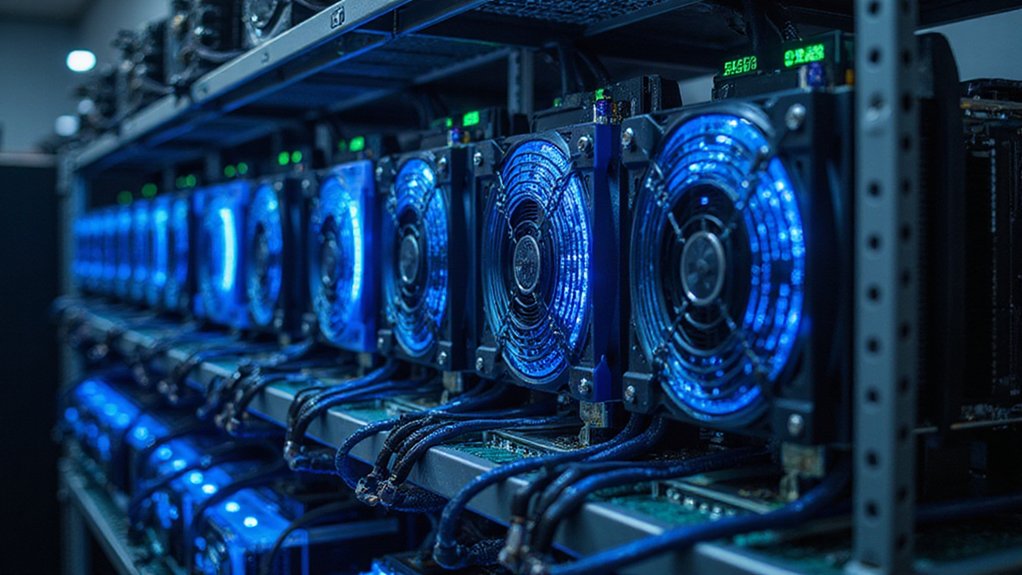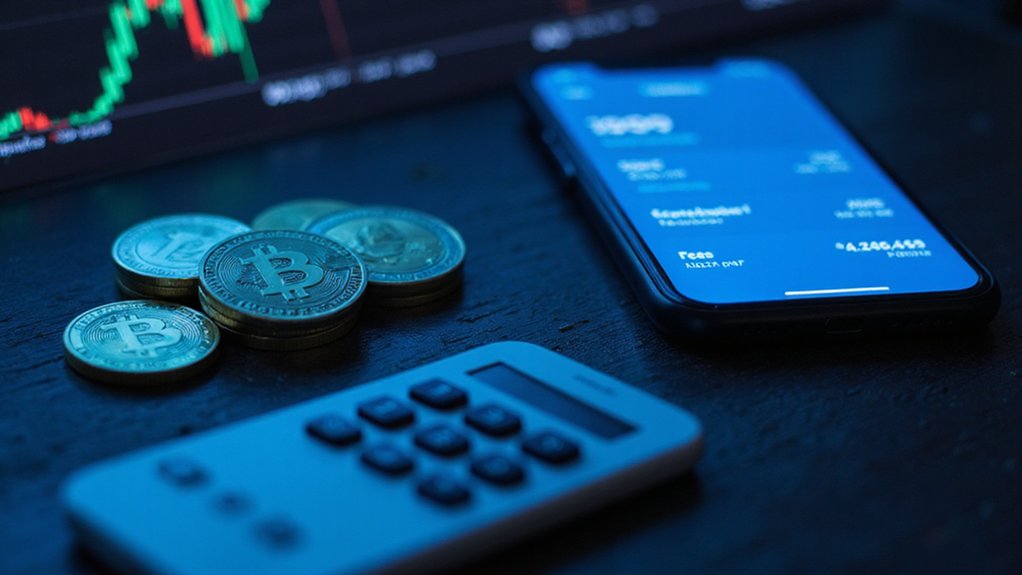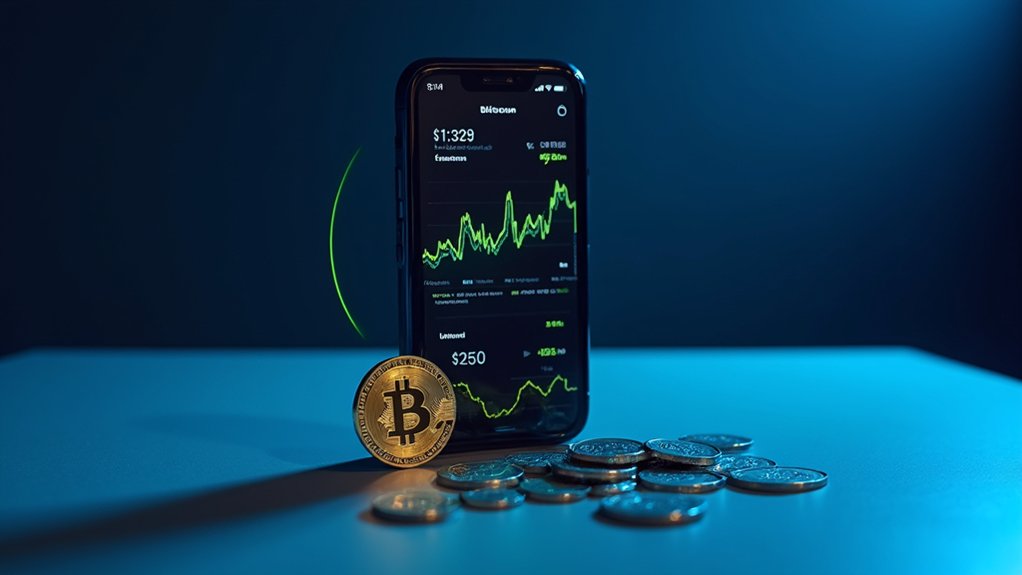Cryptocurrency mining serves as both the security apparatus and issuance mechanism for digital currencies like Bitcoin, where participants (“miners”) compete to solve complex mathematical puzzles using specialized hardware. The victor earns the right to validate transactions, add them to the blockchain, and collect newly minted coins plus transaction fees—all without central oversight. This computational contest maintains network integrity while distributing new currency according to predictable protocols, though profitability hinges on a precarious balance of equipment costs, electricity rates, and cryptocurrency valuations. Further exploration reveals why many miners find themselves enriching hardware manufacturers rather than their own digital wallets.

The digital gold rush of the 21st century, cryptocurrency mining stands as the backbone of decentralized financial networks that have captivated investors and technologists alike.
At its core, mining represents the computational process whereby new cryptocurrency units enter circulation and transactions are validated across a blockchain’s distributed ledger.
This intricate dance of algorithms and processing power serves as both the security mechanism and issuance protocol for digital currencies operating without central authority (a feature purists consider non-negotiable).
Miners fundamentally compete to solve complex mathematical puzzles—a process known as Proof-of-Work—with the victor earning the right to add the next block to the chain and claim newly minted coins plus transaction fees.
The elegance of this system lies in its self-regulating difficulty; as more miners join the network, the puzzles become increasingly challenging, maintaining consistent block creation times despite fluctuating participation.
The mining landscape has evolved dramatically from its humble origins, where enthusiasts could mine Bitcoin using standard computer processors.
Today’s operations frequently involve specialized hardware—Application-Specific Integrated Circuits (ASICs) that render general-purpose computing equipment obsolete for mining purposes—and consume electricity at scales that would make small nations blush.
Indeed, the environmental implications of mining have become increasingly contentious as operations scale.
Participants may choose between solo mining (akin to purchasing a solitary lottery ticket) or pool mining (joining forces with other miners to share rewards proportionally). Finding the correct nonce value is essential to producing a hash that meets the network’s difficulty requirements. Every miner works to generate a unique 64-digit hexadecimal number that meets the network’s target threshold.
Mining operations typically add a new block of verified transactions to the blockchain every 10 minutes, creating a continuous and secure chronological record.
Cloud mining offers an alternative for those reluctant to invest in hardware, though the arrangement often proves more profitable for service providers than clients.
Profitability in mining represents a delicate equation balancing equipment costs, electricity rates, network difficulty, and cryptocurrency valuations.
This calculus shifts constantly, transforming once-lucrative operations into break-even propositions seemingly overnight.
Prospective miners must thus approach the endeavor with clear-eyed financial analysis rather than mere technological enthusiasm—lest they discover that digital mining, like its physical counterpart, often benefits equipment sellers more than treasure seekers.
Frequently Asked Questions
How Does Cryptocurrency Mining Impact the Environment?
Cryptocurrency mining casts a substantial environmental shadow through its voracious energy appetite—consuming power equivalent to entire cities while primarily drawing from fossil fuel sources.
The environmental ledger shows alarming entries: significant carbon emissions (one Bitcoin transaction equals driving 1,600-2,600km), concentrated PM2.5 air pollution affecting millions of Americans, and cross-border contamination that evades regulatory frameworks.
Despite theoretical potential for renewable integration, profit incentives continue steering the industry toward the path of least resistance—and greatest environmental cost.
Can I Mine Cryptocurrency on My Smartphone?
While technically possible, smartphone mining represents the financial equivalent of using a spoon to dig a highway tunnel.
Smartphones lack the computational muscle to compete with ASIC miners, resulting in negligible returns that won’t offset electricity costs—let alone compensate for accelerated device degradation.
Some apps offer mobile mining experiences, but they’re primarily revenue generators for developers through ads rather than viable mining solutions.
For the economically rational, smartphone mining remains firmly in “theoretical curiosity” territory.
What Happens When All Coins of a Cryptocurrency Are Mined?
When all coins of a cryptocurrency are mined, miners shift from block rewards to transaction fees as their sole compensation.
For Bitcoin specifically (reaching its 21 million cap around 2140), this shift could alter the network’s security dynamics—as profitability becomes entirely fee-dependent.
Network participants may face higher transaction costs for priority processing, while mining operations will increasingly hinge on operational efficiency and energy management.
Layer 2 solutions will likely handle the ecosystem’s micropayment needs as this new economic reality unfolds.
Are There Legal Restrictions on Mining in Different Countries?
Legal restrictions on cryptocurrency mining vary dramatically worldwide—a regulatory patchwork that would make Kafka chuckle.
While Kazakhstan welcomes miners with a mere 15% tax rate, at least eight countries have outright banned mining operations (primarily citing environmental concerns).
Some nations create peculiar dichotomies: permitting trading while prohibiting institutional involvement (Colombia), or allowing ownership but forbidding payment use (Indonesia).
The regulatory landscape continues to evolve, largely driven by energy consumption concerns and financial control imperatives.
How Does Mining Affect Cryptocurrency Market Price?
Mining impacts cryptocurrency prices through multiple mechanisms.
It regulates coin supply—introducing new tokens while simultaneously establishing scarcity through difficulty adjustments and halving events.
On the demand side, miners’ behavior (particularly institutional players) signals market confidence, though their occasional liquidations to cover operational costs can trigger volatility.
The evolving efficiency of mining operations—driven by technological advancement and renewable energy adoption—creates downward pressure on costs, potentially stabilizing longer-term price dynamics despite short-term fluctuations that sometimes perplex even seasoned market analysts.









